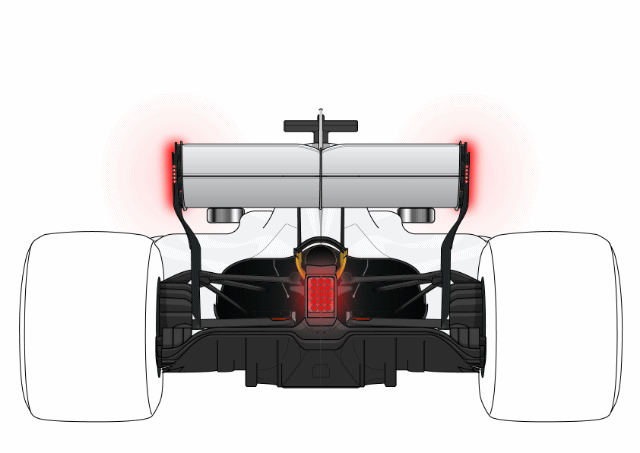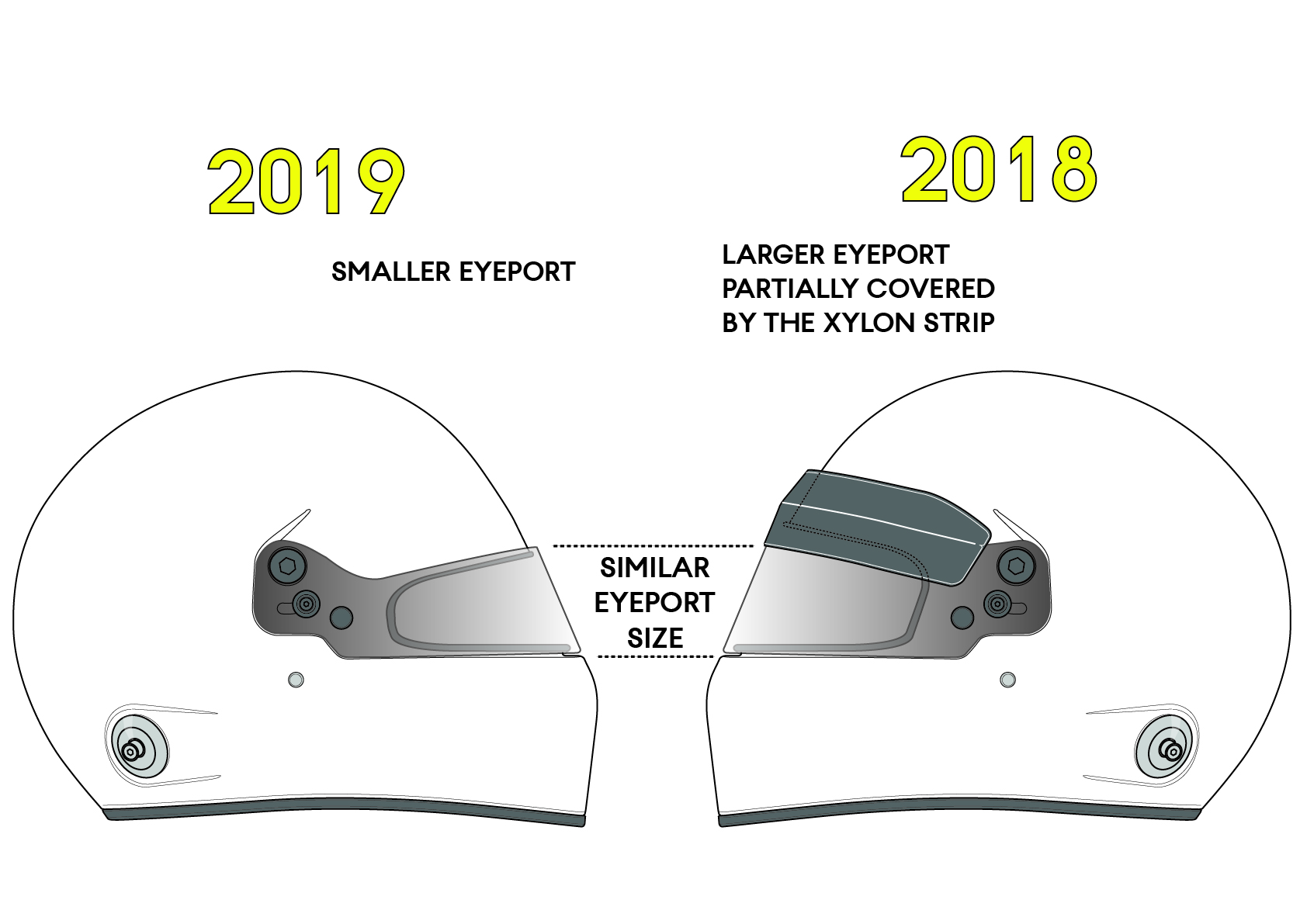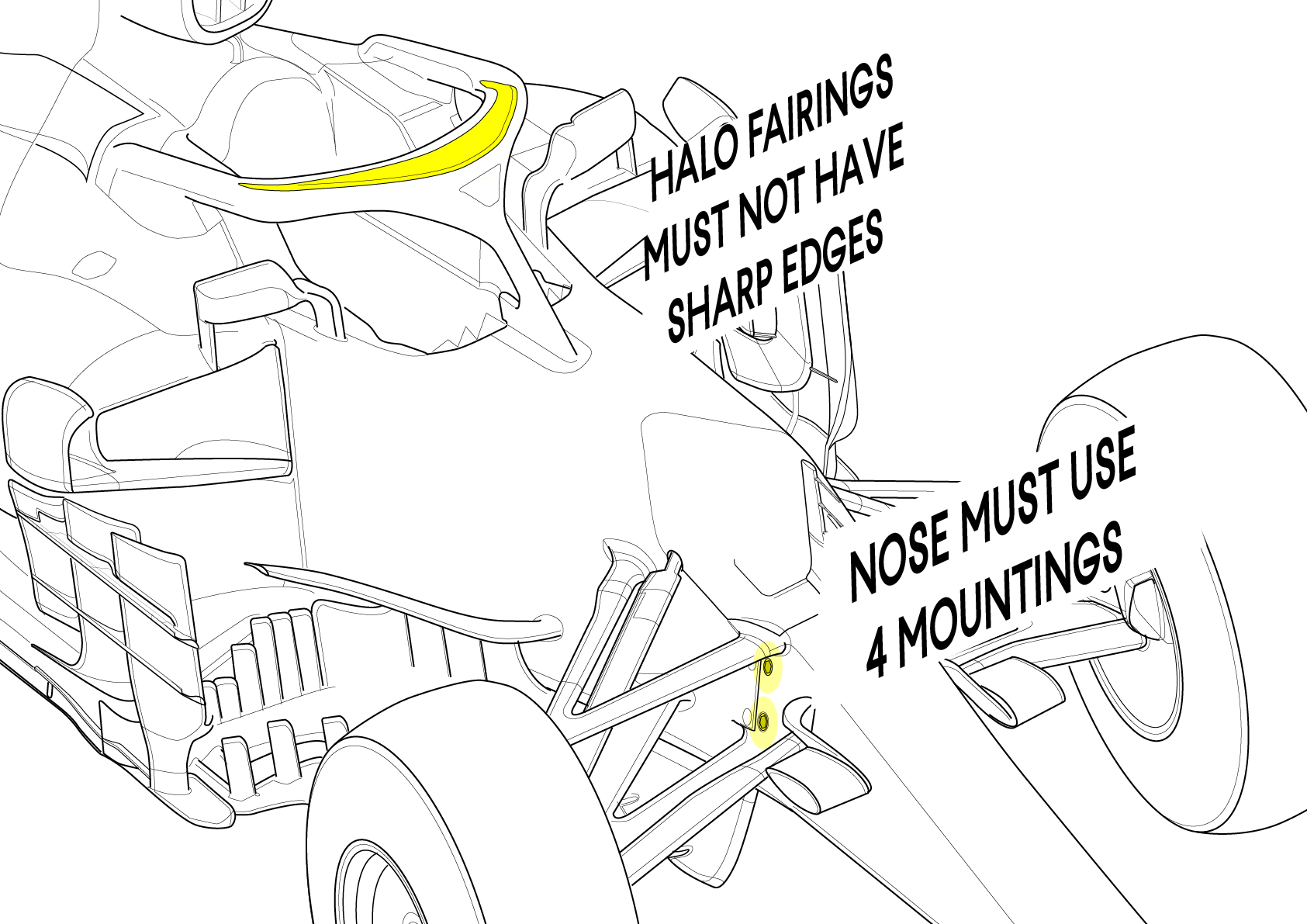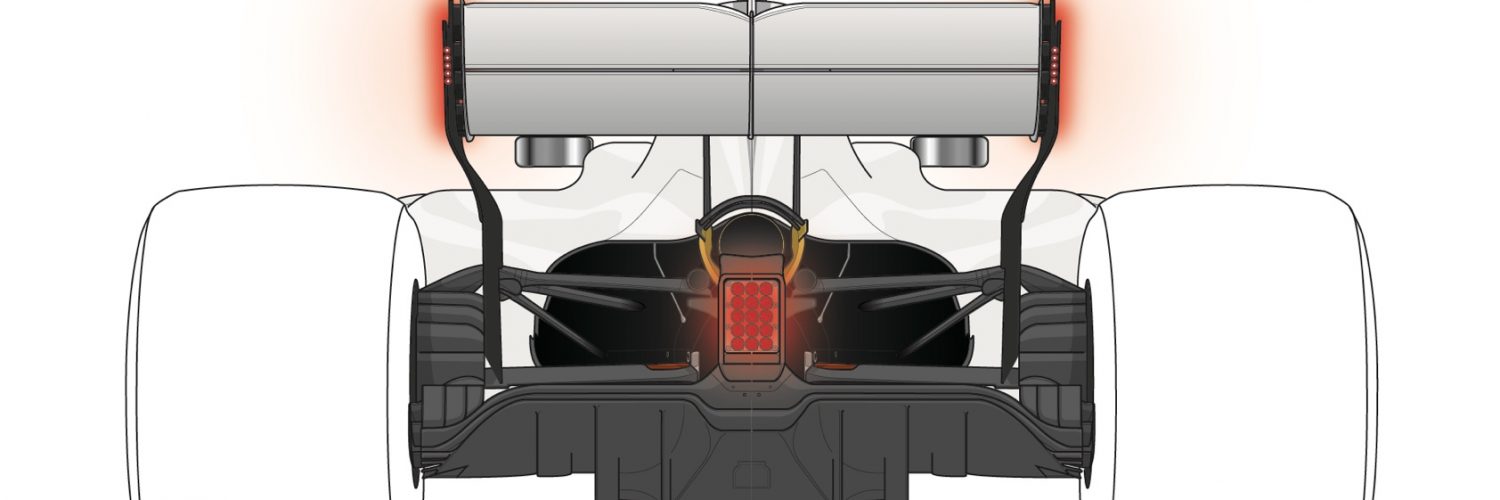Each year, the safety of the sport is improved bit-by-bit. Last season, we had the halo frontal cockpit protection introduced to F1 and other lower formulae, whilst other categories also adopted the important measure as their new chassis were introduced. For F1 in 2019 there are 4 key changes, all largely as a result of research conducted by the FIA Global Institute for Motorsport Safety (GIMS) – a group that actively researches the outcomes of accidents or near misses and develops safety solutions accordingly.
Tail lights

The most obvious change will be the new rear lights fitted to the cars. There will now be an additional pair of LED lights running vertically up the rear wing endplates which will light up and flash in the same way as the center rain light. They are similar in design to the lights also run in WEC’s prototype class. These lights were trialed in F1 during mid-season tests and are simply an extra clear way for a following driver to see the Rain and ERS lights flashing.
Helmet and biometric gloves

Less visible, but of critical safety importance, is the new F1 helmet standard introduced this season. As the result of a long GIMS research project, the design shape and structure of helmets is to change. The current helmet specification is a hybrid of the post-1994 (Ayrton Senna’s crash) helmet standards and the addition of the Xylon reinforcement strip (added after Felipe Massa’s incident in Hungary 2009), where an errant spring from Rubens Barrichello’s Brawn in front hit his helmet.
With the eye opening the weakest point of the crash helmet, tests were conducted to find the best solution to prevent the helmet being breached by an external object. The result is that the eye opening has been reduced to the same size as the resulting opening of the current helmet and Xylon strip, as the strip covers some of the larger eye opening. Thus, the new smaller viewing area is no less obstructed than before, and research conducted with drivers at F1 tests has supported the fact that no peripheral vision has been lost with the changes. The revised tests and structural demands ensure that the current helmets are safer and just as light as the current specification.
Looking down slightly, the drivers will also see another rule change, the mandatory biometric glove. This was run last year but is now written into the rules and thus compulsory for the drivers to wear.
A sensor pad in the finger tip of the one of the glove’s fingers detects the drivers’ heart rate and blood oxygen level, which is recorded and broadcast to the FIA in real time when on track. This gives the FIA not only basic health information on the drivers when running under race pressure, but also in the event of an accident it gives real-time information for the medical car to base important decisions on. If a driver is trapped in an inverted car or under debris, the medical team can establish the driver’s vital signs and apportion the correct level of urgency to the driver’s extraction. For example, risking secondary injuries, while trying to extract a driver with serious vital signs.
Halo fairing & nose mounting

Going almost unnoticed will be the other two regulation changes for safety. Firstly, the halo’s outer bodywork cannot be sharp, it must be subject to a minimum radius – an obvious safety measure for drivers, marshals and mechanics. Next, the nose cone which forms the frontal crash protection for the car must be affixed with four identical mounts and be subject to a more stringent knock-off test. This has been introduced after a series of incidents where the nose has been side-swiped off a car, leading to the car potentially having a secondary impact without this crash structure in place. While there is an existing side-swipe test, teams have been passing this with just two fasteners, as the nose is quicker to change in a pit stop with just the two mounts to undo.
Read more about F1 technical regulations for 2019: Overview | Performance | Fairness




“which will light up and flash in the same way as the center rain light”
So why and when do the tail lights flash? Are they brake lights or something else? Thanks.